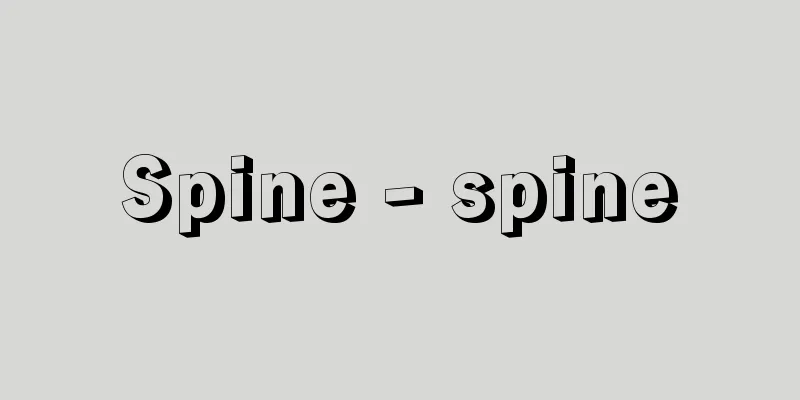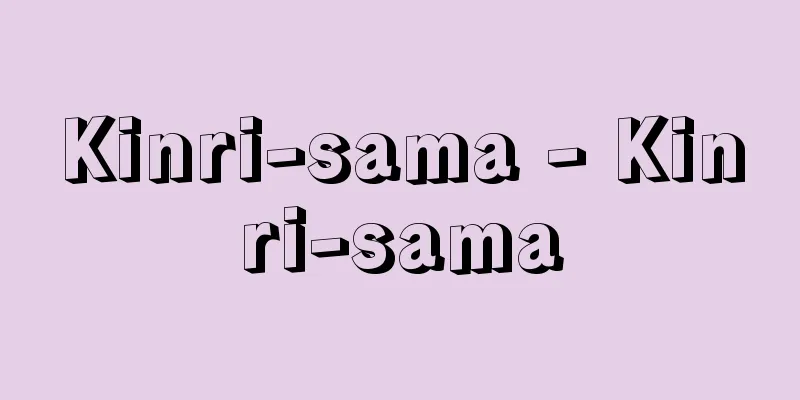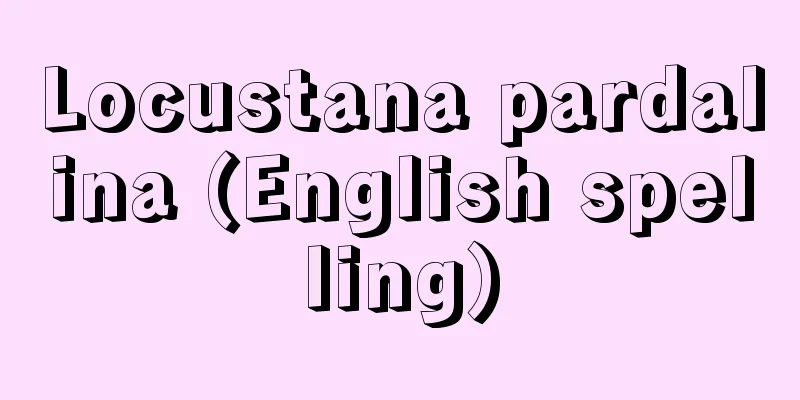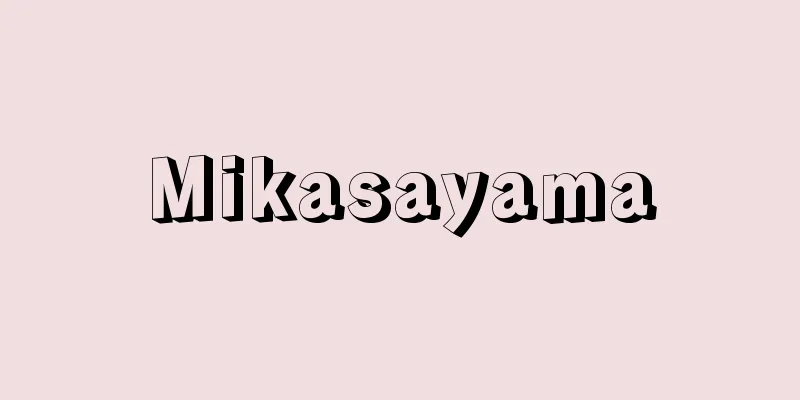Spine - spine

|
The bones that make up the vertebral column, the main part of the axial skeleton of vertebrates. The spine is also called the vertebrae or vertebral bones, and is well developed in bony fish and above. The general structure of the spine is a cylindrical part called the vertebral body that is formed around the notochord, from which protrusions emerge. There are a pair of protrusions extending dorsally, one on each side, which surround the spinal cord and fuse at the upper back to form a neural arch, and neural spines extend further dorsally. A pair of ventral processes protruding from the ventral side surround blood vessels to become a blood vessel arch, or remain open on both sides. In amphibians and above, transverse processes extending on both sides are developed to correspond to the increase in body width. The vertebrae are articulated with each other, allowing them to flex and extend as a whole. The surfaces of the vertebrae relative to the adjacent vertebral body are classified into various shapes, such as biconcave, which is concave on both sides, anterior concave, which is concave on the front and protruding on the back, posterior concave, and biflat, which is almost flat on both sides. [Seiichiro Kawashima] Human spineThe spine belongs to the short bones and is composed of three parts: a short cylindrical vertebral body, an arch-shaped vertebral arch that extends backwards on both sides of the vertebral body, and three types of processes (7 in total) that extend from the vertebral arch. In the center, surrounded by the vertebral body and vertebral arch, there is a large vertebral foramen. The human spine is divided into cervical (7 vertebrae), thoracic (12 vertebrae), lumbar (5 vertebrae), sacral (5 vertebrae), and caudal (3-6 vertebrae), and each vertebral group has its own unique shape, making it easy to distinguish between them. The cervical vertebrae are generally thin and have large vertebral foramen. The first and second cervical vertebrae are also shaped differently from the other vertebrae. The first cervical vertebra lacks a vertebral body, so it is almost ring-shaped and is also called the atlas. The second cervical vertebra has a tooth-like protrusion (odontoid) protruding upward from the upper surface of the vertebral body like the tip of a little finger, which contacts the front edge of the vertebral foramen of the first cervical vertebra to form an axis along which the first cervical vertebra with the skull on it rotates. For this reason, the second cervical vertebra is also called the axis (formerly the pivot). The odontoid was originally the vertebral body of the atlas, but it separated and became fused to the second cervical vertebra. Because of this protrusion, the axis looks like a person sitting cross-legged, and is commonly called the Osharisama (a relic of a god). In general, the lower the thoracic and lumbar vertebrae, the larger they become. Five sacral vertebrae are fused together to form the sacrum, while the coccygeal vertebrae are small and lack a vertebral arch. The spinous processes that extend backward from the vertebral arch and the transverse processes that extend from both sides of the pedicle root are attached to the back muscles and are involved in the movement of the vertebrae. Just behind the root of the vertebral arch, superior and inferior articular processes extend upward and downward, and the upper and lower vertebrae are connected by these joints. The spinous process of the seventh cervical vertebra is clearly prominent enough to be palpable from the surface of the body, so it is also called the protuberant vertebra, and helps to determine the order of the spine. [Kazuyo Shimai] [Reference] |©Shogakukan "> Names of parts of the spine Source: Shogakukan Encyclopedia Nipponica About Encyclopedia Nipponica Information | Legend |
|
脊椎動物の中軸骨格の主要部分である脊柱をなす骨をいう。脊椎は椎骨、脊椎骨ともよばれ、硬骨魚類以上でよく発達している。脊椎の一般的構造では、脊索を囲んで形成された椎体とよばれる円筒状部分があり、これから突起が出る。背側に伸びる突起は左右1対あり、脊髄を囲んで背方上部で融合して神経弓をつくり、さらに背方に神経棘(きょく)を伸ばす。腹方に出る1対の血道突起は血管を囲んで血道弓となるか、左右に開放したままである。両生類以上のものでは両側に伸びる横突起が発達し、体幅の増加に対応している。脊椎は互いに関節をなしているので全体として屈伸が可能である。隣接する椎体に対する面は、前後ともくぼんだ両凹、前面がくぼみ後面が突出した前凹、その逆の後凹、両面ともほとんど平らな両扁(へん)などの形態に区別される。 [川島誠一郎] ヒトの脊椎脊椎は短骨に属し、短円柱状の椎体、この椎体の両側から後方に出ている弓状の椎弓、椎弓から出る3種類(7個)の突起の3部分から構成される。椎体と椎弓とに囲まれた中央には、大きな椎孔ができている。ヒトの脊椎は、頸椎(けいつい)(7個)、胸椎(12個)、腰椎(5個)、仙椎(5個)、尾椎(3~6個)に分けられるが、各脊椎群は、それぞれ特有の形態をもっているので、判別は容易である。 頸椎は全般に厚さが薄くて椎孔が大きい。また、第1頸椎と第2頸椎は他の脊椎と形態が異なる。第1頸椎は椎体を欠くので、ほとんど輪状で、環椎ともよばれる。また第2頸椎では、椎体の上面から上方へと歯状の突起(歯突起)が小指の先のように突き出ていて、この突起が第1頸椎の椎孔の前縁に接して軸となり、これに沿って頭蓋骨(とうがいこつ)をのせた第1頸椎が回転する。それゆえ、第2頸椎を軸椎(古くは枢軸)ともよぶ。歯突起は本来、環椎の椎体であったものが、分離して第2頸椎に癒着したものである。この突起があるために、軸椎は人があぐらをかいたような形になり、俗に御舎利様(おしゃりさま)ともよばれている。 胸椎、腰椎は全般に下位のものほど大形になる。仙椎は5個が癒合して仙骨となり、尾椎は小さくて椎弓が欠けている。椎弓から後方に出ている棘突起(きょくとっき)と椎弓根部両側から出る横突起には、背筋(はいきん)が付着して椎骨の運動に関与する。椎弓の根部のすぐ後ろからは、上下に向かって上関節突起と下関節突起とが出ており、上下の脊椎はこの関節によって結び付く。第7頸椎の棘突起は、明らかに体表から触れるほど突隆しているので、第7頸椎を隆椎ともよび、脊椎の順位を定めるのに役だっている。 [嶋井和世] [参照項目] |©Shogakukan"> 脊椎の各部名称 出典 小学館 日本大百科全書(ニッポニカ)日本大百科全書(ニッポニカ)について 情報 | 凡例 |
Recommend
Celestite - Tenseiseki (English spelling) Celestite
Along with strontianite, this is the most common ...
The Administration and Politics of Tokyo
…In 1922, Goto Shinpei, who was the mayor of Toky...
Lebonah
…These two spices were also produced in Somalia, ...
Nagarjunasagar (English spelling)
…The site was located on the right bank of the Kr...
Gotemba [city] - Gotenba
A city in northeastern Shizuoka Prefecture. It was...
Uriyangkhatai (English spelling)
Son of Subetei, a military commander of the Mongol...
Ued Gelato - Ued Gelato
…The area is now a completely dry, rugged mountai...
Theodahad
?‐536 King of the Ostrogoths. Reigned 534-536. Nep...
Kaolin
A fireclay composed of kaolin minerals (kaolinite...
Poster - poster (English spelling)
A piece of paper posted for the purpose of public...
Yiddish literature - Yiddish literature
Yiddish, the medium of expression for Yiddish lite...
Uchiyama Kannon
…In recent years, an industrial complex has been ...
Iritis
… [Uveal Disorders] The uvea is a tissue that is ...
Commissioned Women's Class - Ishokufujingakkyu
...Social education for housewives was popular be...
Arrival - Hairin
This occurs during childbirth when the top of the ...









